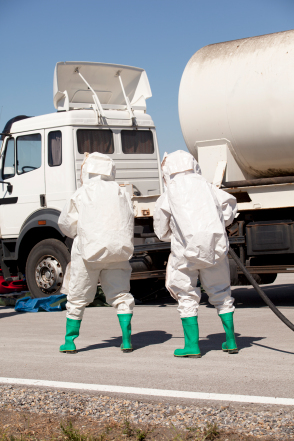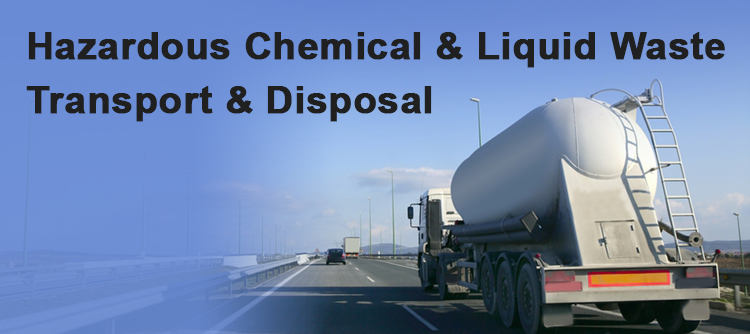Industrial Wastewater Treatment: Advanced Techniques for Effective Management
Industrial Wastewater Treatment: Advanced Techniques for Effective Management
Blog Article
Exactly How Fluid Waste Disposal Functions: A Detailed Introduction of Strategies and Technologies Utilized

Introduction of Liquid Waste Types
The complexity of liquid waste types demands a comprehensive understanding of their features and effects for disposal. Fluid waste can generally be classified into numerous types, including commercial, community, farming, and harmful waste. Each group exhibits distinct properties, requiring details monitoring approaches to alleviate ecological and health risks.
Industrial fluid waste stems from producing procedures and commonly contains a series of pollutants, such as hefty metals, solvents, and natural substances. Local liquid waste, mostly consisting of wastewater from homes and industrial establishments, has raw material, nutrients, and pathogens (industrial wastewater treatment). Agricultural liquid waste, consisting of drainage from farms, may include fertilizers, pesticides, and animal waste, positioning threats to water high quality and ecological communities
Dangerous fluid waste is characterized by its toxicity, reactivity, or potential to cause damage. This group includes materials like acids, bases, and specific chemicals that demand strict handling and disposal protocols. Recognizing these diverse fluid waste kinds is important for creating reliable disposal techniques and ensuring compliance with environmental guidelines. Correct classification and characterization are necessary for carrying out suitable therapy methods and lessening the negative influence on public health and the atmosphere.
Physical Therapy Approaches

Screening is the first step, where bigger fragments and particles are eliminated from the fluid waste making use of screens or grates. In sedimentation containers, heavier bits resolve at the bottom, creating a sludge layer, while the cleared up liquid can be additional treated.
Filtration is another crucial method that includes passing the fluid with permeable products, such as sand or membrane layers, to record smaller particles. This action boosts the top quality of the liquid, making it appropriate for succeeding therapy processes.

Chemical Therapy Techniques
Chemical therapy techniques are crucial for efficiently managing liquid waste, particularly in dealing with liquified and colloidal contaminants that physical techniques might not appropriately get rid of. These techniques make use of various chemical agents to counteract, speed up, or change dangerous materials right into much less unsafe types.
One typical technique is coagulation and flocculation, where chemicals such as alum or ferric chloride are added to advertise the gathering of suspended fragments. This process enhances Click Here sedimentation, enabling much easier removal of the resulting sludge. Additionally, oxidation processes, using representatives like chlorine or ozone, are employed to break down complicated natural substances and virus, providing the waste more secure for discharge or additional treatment.
Neutralization is an additional critical method, which adjusts the pH of acidic or alkaline waste streams to neutral levels, avoiding possible damage to downstream systems and the setting. Additionally, progressed oxidation processes (AOPs) make use of mixes of oxidants and ultraviolet light to deteriorate consistent contaminants, achieving a higher degree of therapy effectiveness.
Organic Therapy Processes
Biological treatment procedures play an essential role in the administration of liquid waste by using microbes to decay raw material and reduce contaminant degrees. These procedures can be generally categorized into aerobic and anaerobic therapies, each using certain microbial neighborhoods to accomplish effective waste deterioration.
Cardio treatment involves using oxygen to help with the failure of natural materials by microorganisms. This procedure is commonly applied in activated sludge systems, where aeration storage tanks offer a conducive setting for microbial growth, leading to the oxidation of natural contaminants. The resultant biomass can be divided from treated effluent via sedimentation.
In contrast, anaerobic therapy occurs in the absence of oxygen, depending on various bacteria to break down raw material. This approach is specifically beneficial for high-strength waste, as it produces biogas, a renewable resource resource, while reducing sludge manufacturing. Technologies such as anaerobic digesters are regularly used in municipal and industrial applications.
Both important source anaerobic and aerobic organic therapies not only decrease the ecological influence of fluid waste but additionally facilitate resource recuperation, making them crucial parts of sustainable waste management techniques. Their versatility, effectiveness, and effectiveness sustain their widespread execution throughout different sectors.
Arising Technologies in Disposal
Cutting-edge techniques to liquid waste disposal are rapidly advancing, driven by advancements in innovation and a boosting emphasis on sustainability. Amongst these emerging innovations, membrane bioreactors (MBRs) have gained grip for their capacity to combine organic treatment with membrane layer purification, causing top quality effluent that can be recycled in different applications. MBRs enable smaller sized footprints and much more reliable procedures contrasted to standard systems.
Another promising growth is making use of anaerobic digestion combined with nutrient recuperation innovations, which not only treats liquid waste however likewise generates biogas and recovers important nutrients like nitrogen and phosphorus. This twin advantage boosts source performance and lowers ecological effect.
Furthermore, progressed oxidation procedures (AOPs) are being adopted for the deterioration of complicated organic pollutants. These methods utilize powerful oxidants and stimulants to break down impurities at the molecular degree, offering a highly reliable option for difficult waste streams.
Additionally, the assimilation of expert system and artificial intelligence in waste monitoring systems is optimizing functional effectiveness and anticipating maintenance, leading to minimized prices and improved ecological compliance. These technologies show a considerable change in the direction of even more sustainable and effective fluid garbage disposal methods.
Final Thought
In final thought, reliable fluid waste disposal necessitates a comprehensive understanding of numerous strategies and innovations. By constantly advancing these methods, it comes to click to read more be feasible to attend to the growing obstacles connected with fluid waste, eventually contributing to environmental protection and resource healing.
Liquid waste disposal is an important aspect of environmental management, requiring a comprehensive understanding of various methods and modern technologies tailored to various waste kinds. Fluid waste can extensively be categorized into several kinds, consisting of commercial, municipal, agricultural, and unsafe waste. Agricultural liquid waste, including overflow from ranches, might include fertilizers, chemicals, and pet waste, positioning risks to water top quality and ecosystems.
Various physical therapy techniques play a crucial role in handling liquid waste successfully - industrial wastewater treatment.In verdict, reliable liquid waste disposal necessitates a thorough understanding of different strategies and innovations
Report this page